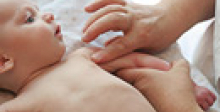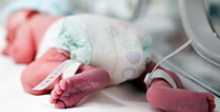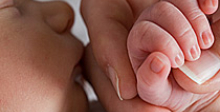Internal mini form
Contact Us Today
Parents wsuspect a child has Cerebral Palsy likely wish that a one-step, quick test would confirm that diagnosis. That, however, is not how physicians make a determination regarding Cerebral Palsy. Getting to a diagnosis is a multi-step, complex process of tests, evaluations, and eliminations that in the end, rule everything else out. Understanding the diagnosis process can be a source of comfort for parents anxious about the process.
The process around a Cerebral Palsy diagnosis
The process for diagnosing Cerebral Palsy involves monitoring the child’s development and watching for possible signs of impairment. If a baby is born prematurely, or at a low birth weight, he or she is monitored closely in the neonatal intensive care unit of the hospital. If the infant attends regular well-baby visits, during examination of the child the pediatrician may be first to notice signs of Cerebral Palsy. In some cases, it is the parents who notice symptoms they relay to the child’s doctor.
Parents are often disheartened to learn that there is no singular test that will definitively diagnose a child with Cerebral Palsy. Once a round of medical evaluations are initiated in order to form a diagnosis, parents prepare for a long and sometimes frustrating process that will, in time, provide answers about a child’s condition.
The diagnosis process can seem intimidating. Understanding the diagnosis process can be a source of comfort for parents anxious about the process.
The 12-Step Diagnostic Process entails the following steps:
- Step 1: Parental Observation
- Step 2: Clinical Observations
- Step 3: Motor Skill Development Analysis
- Step 4: Medical History Review
- Step 5: Documenting Associative Conditions, Co-Mitigating Factors, and Ruling-Out Other Conditions
- Step 6: Obtaining Test Results
- Step 7: Diagnosis
- Step 8: Obtaining a Second Opinion
- Step 9: Determining Cause
- Step 10: Care Team Assembly
- Step 11: Care Plan Creation
- Step 12: Embracing a Life with Cerebral Palsy
These steps are detailed below.
Step 1: Parental Observations
Outside severe cases, which are often diagnosed at or within days of birth, parents may question noticeable signs. The primary indicators parents will notice are developmental delay and impaired muscle tone.
Developmental delay occurs when a child does not develop specific skills within the predicted time period. Parents might notice the child is not reaching for toys at three or four months, sitting up by six or seven months or walking at twelve to fourteen months. In some cases, the child might appear to develop motor skills ahead of schedule. Rolling over is a significant milestone, but when rolling occurs too early, it can be a sign of abnormal reflexes. It can also indicate spasticity. Demonstrating hand preference before 12 months is also an indicator of possible Cerebral Palsy.
Muscle tone is another indicator. Normally, muscles contract when a limb is flexed and relax when the limb is extended. Muscles that are very tight, or inappropriately relaxed, can be a sign of Cerebral Palsy, which directly affects muscle tone and posture. Tremors are also a sign.
Additionally, parents may notice the child seems stiff, has problems swallowing, does not appear to hear or has eyes that do not seem to focus. The child may experience gastrointestinal problems, such as vomiting, constipation, or bowel obstruction. Some children demonstrate impaired oral-motor function with signs of vomiting, aspiration pneumonia, failure to thrive, drooling or communication difficulties. One half of children with Cerebral Palsy experience seizure activity. Any of these signs, or others, should be discussed with the child’s primary care physician, preferably during well-baby visits.
Step 2: Clinical Observations
Parent observations are an important part of a doctor’s evaluation. Pediatricians use parental input as a basis for further examination. They will explore signs parents notice and gauge the possibility of impairment. Well-baby visits are designed for clinical documentation of developmental milestones. Height, weight, reflex, and age-appropriate behavior are part of developmental surveillance recommended by the American Academy of Pediatrics for infants at the ages of 9 months, 18 months, and 30-months of age. When surveillance of a child spurs concern, the Academy recommends standardized developmental screening tool assessment and early return visits.
In addition, doctors will look for the persistence of “primitive” reflexes that, in typical development, appear and disappear in a predictable order during infancy. The tonic reflex (when the baby’s head is turned to the side, the baby will extend the arm on the side the head is facing, while flexing the other arm) appears around four months and then fades away. It is not a strong reflex, yet in children with Cerebral Palsy the tonic reflex does not always fade, and sometimes continues to grow stronger, even dominating a child’s motor skills. Doctors examine the child’s supine position (retraction of the head, neck and shoulders); prone position (protective head turns, arm flexor spasticity, and extensor spasticity of legs); and upright posture (extensor spasticity of legs, reflexes, and protective arm extension).
Many other reflexes develop, then disappear over time. Doctors test and document the child’s development. The information recorded in these records is then used to confirm or rule out Cerebral Palsy or other conditions.
Step 3: Motor Skill Development Analysis
The cause of Cerebral Palsy is either brain injury or brain malformation occurring during fetal development, birth, or after birth while the brain is still developing. The brain damage occurs in parts of the brain that affect motor control. It does not progress, which differentiates Cerebral Palsy from similar conditions. Motor skill development analysis is used at various intervals to gauge key developmental milestones. The following are essential in determining the extent, location, and severity of Cerebral Palsy.
In the case of Cerebral Palsy, developmental motor delay is a key indicator. The pediatrician will be evaluating:
- Muscle tone
- Movement coordination and control
- Reflex irregularity
- Posture
- Balance
- Fine motor function
- Gross motor function
- Oromotor function
The evaluation of motor skills may help establish the type(s) of impairment and degree of severity. This is essential in determining the cause or source of impairment. The severity of impairment also may be necessary in qualifying for benefits and support services.
Step 4: Medical History Review
Eliminating other possibilities is a crucial factor in diagnosis of Cerebral Palsy. Both parents’ medical histories are important to this process. By reviewing medical history of parents, doctors can look for possible genetic, progressive, or degenerative nervous system disorders. Economic status and social habits may also be reviewed.
Doctors will also want to know about the child’s prenatal history, as well as any complications during labor and delivery.
Step 5: Documenting Associative Conditions, Co-Mitigating Factors and Ruling-Out Other Conditions
Because there is no test that definitely confirms or rules out Cerebral Palsy, there is always a chance other conditions must be excluded from a list of possibilities, and Cerebral Palsy must be fully considered. Other disorders and conditions can appear as Cerebral Palsy, and Cerebral Palsy is often accompanied by associated conditions that complicate the process of diagnosis.
The medical examination process can involve multiple doctors, tests, and appointments. During this time doctors will rule out other similar conditions such as:
- Degenerative nervous disorders
- Genetic diseases
- Muscle diseases
- Metabolism disorders
- Nervous system tumors
- Coagulation disorders
- Other injuries or disorders which delay early development, some of which can be “outgrown”
The brain injury or malformation that caused Cerebral Palsy is non-progressive. Many nervous system disorders do progress. They may start with minor symptoms, but, over time, the symptoms continue to worsen or multiply. If the child’s condition is showing signs of progression, these signs will help doctors rule out a Cerebral Palsy diagnosis. Like many aspects of diagnosing Cerebral Palsy, being able to determine the exact cause of your child's challenges requires observation over time.
Step 6: Obtaining Test Results
Many screens, tests and medical specialists are part of the process of diagnosis. Every state mandates newborn screens at the time of birth. The tests performed vary by state, but may yield some early results.
Infants who test positive for a developmental delay may be referred to medical specialists for further evaluations. The pediatrician will document all surveillance, screening, evaluation, and referral activities in the child’s health record. It is suggested that parents request a written copy of all test results and advice rendered, as well as any other information presented at various visits to the the doctor's office. These documents become valuable when speaking with the multitude of practitioners that may be required in the child’s future care. Having the documents on hand will save money and allow parents to be informed and efficient.
Common tests that involve neurologists or neuroradiologists, include neuroimaging, such as cranial ultrasound, computed tomography scan (CT Scan), and magnetic resonance imaging scans (MRIs). These tests allow neurologists to actually “see” the brain. Various disorders, injuries, and conditions yield different results. These can be used to rule out Cerebral Palsy. Or, if Cerebral Palsy is eventually diagnosed, they can provide doctors an exact picture of the injury to the brain. Blood tests may be ordered to check chemistry, plasma and chromosome levels. Seizure activity will be monitored.
Medical specialists are brought in to test hearing, vision, and perception, as well as cognitive, behavioral, and physical development. A child may be sent to an orthopedic surgeon to ascertain delay in motor development, record persistence of primitive reflexes, examine for dislocated hips, and check on abnormal postural reactions.
A genetic specialist may look for hereditary components.
The lengthy and detailed process can help rule out or confirm Cerebral Palsy, while also providing a broader assessment of the child’s abilities.
Step 7: Diagnosis
The months or years it takes to confirm a Cerebral Palsy diagnosis does not lessen the impact of the news. It can be an emotional moment for parents.
Many issues that surround the diagnosis of Cerebral Palsy do not have anything to do with the medical tests and observations necessary to confirm the condition. For example, parents may initially shy away from the news, especially if they were fostering hope that their child would “outgrow” the condition. The diagnosis may bring a mixture of fear, guilt, or apprehension. Some parents wonder if the cause of the child’s impairment is somehow their fault, or whether they did something wrong. Others may be relieved that their child has a physical impairment, but is expected to live a full, long life.
Doctors, likewise, may not want to deliver a Cerebral Palsy diagnosis until they are fully certain. A major fear is that a diagnosis of Cerebral Palsy will interfere with bonding between parents and child. Doctors do not want to misdiagnose the condition and cause undue stress.
Doctors and parents are aware that early diagnosis can lead to early intervention options. Some treatment protocols have proven more effective when provided early. A formal diagnosis is required to obtain government benefits that help a family mitigate the financial burden as expenses for ongoing testing and medical care pile up.
Debate exists over the best time to diagnose Cerebral Palsy. Issues surrounding the timeliness of diagnosis focus on three areas:
- Early diagnosis – Early diagnosis can lead to early intervention, treatments, therapies, funding and benefit programs. It can result in misdiagnosis.
- Delayed diagnosis – A delay in diagnosis can allow time for the family to bond before the condition is known. It allows time to observe developmental milestones; rule out other conditions; and confidently confirm Cerebral Palsy.
- Misdiagnosis – Misdiagnosis can occur if signs are not properly monitored, tested, and confirmed. Or, when other conditions aren’t ruled out properly. The diagnosis of Cerebral Palsy may be correct, but the severity, extent, or co-mitigating factors may be improperly diagnosed.
Step 8: Obtaining a Second Opinion
Parents may seek a second opinion to confirm the diagnosis of Cerebral Palsy and to rule out the possibility of misdiagnosis. A diagnosis of Cerebral Palsy is enough to warrant a second opinion. Additional factors that might increase the need for a second opinion include:
- When surgery is presented as a treatment option
- When there are many possible treatment options
- When the proposed treatment is unsatisfactory for any reason
- When no treatment is presented
- When parents just feel they require another opinion
The current doctor should not be offended if parents ask for a referral for a second opinion by explaining that this is a complicated and important issue for the family. Those who feel uncomfortable asking one provider for a referral may ask another trusted family doctor, or their health insurance provider network. The costs and procedure for seeking a second opinion vary depending on the health care provider, and parents should therefore discuss the intention of seeking a second opinion with their health insurance provider to fully ascertain whether it will be covered under the insurance plan.
Second opinions can assist with outstanding questions; remove any doubts; provide a second opinion on treatment options; and allow for a more informed, educated decision on appropriate treatment when moving forward.
Step 9: Determining Cause
Brain injury or brain malformation is the root cause of Cerebral Palsy. There are three types of brain injury and a form of brain malformation:
- Periventricular leukomalacia (PVL) – damage to the white matter of the brain tissue
- Intracranial hemorrhage (IVH) – brain hemorrhage
- Hypoxic-ischemic encephalopathy (HIE) or intrapartum asphyxia – lack of oxygen to the brain (asphyxia)
- Cerebral dysgenesis – brain malformation or abnormal brain development
The Academy of Pediatrics recommends that parents attempt to discern what caused the brain damage and at what point in the developmental process the damage occurred. According to the Academy, cause of brain damage can be identified in approximately 25% of all cases. Identifying the root cause will provide the following benefits:
- Greater understanding of the child’s impairment
- Identify whether there is recurrent risk in future pregnancies or family planning
- Identify specific medical treatments
- Identify therapeutic intervention programs
- Identify early intervention education programs
- Identify government assistance, community resources, benefit programs, and funding sources
- Further research for prevention and cures
Step 10: Care Team Assembly
One of the most important components of parenting a child with Cerebral Palsy is the responsibility of assembling the proper doctors, therapists, educators, and organizations to provide the best care, treatment, and support for the child. The goal is to assemble resources that will help the child succeed.
A care team can evolve over time and is subject to immediate and long-term needs of the child. The team consists of professionals from different specialties, such as:
- Caregivers – daycare, respite, personal assistants, and guide dogs
- Support organizations – MyChild™, Cerebral Palsy organizations, community support groups, disability organizations, counseling services, friends, and family
- Educators – school administrators, teachers, speech therapists, and special education support staff
- Lawyers – lawyers concentrating in estate planning, disability rights, birth injury, family law, SSI, school rights, medical malpractice, and more
- Government agencies – government agencies (federal, state and local) offering benefits, education programs, information resources, disability guidance, health care options, advocacy, and research
- Tax and financial planners – accountants and financial planners that advise in special needs tax advantages, financial planning, wills and trusts, and planning for future expenses
Many health care professionals may assist throughout the child’s life. Some will only be seen for specific needs such as diagnosis, whereas others may oversee the child’s overall treatment plan well into adulthood. Medical professionals often utilized in the diagnosis process include:
- Pediatricians – care for children from birth through early adulthood
- Neurologists – specialize in the nervous system of children, particularly neurological disorders and diagnosing the brain injury or malformation that caused the child’s Cerebral Palsy
- Ophthalmologists – focus on the eyes and visual pathways
- Orthopedic surgeons – specialize in motor development disorders, bones, joints, ligaments, tendons, and muscles.
- Otologists – study the ear, its diseases, and disorders
- Neonatologists – medical professionals who typically work in the neonatal intensive care units (NICU) who specialize in the care of newborn infants, in particular the ill or premature babies
- Geneticists – study genetics and heredity disorders
However, depending on the child’s signs and symptoms or the treatment protocol required, the following practitioners may also become involved in the child’s treatment plan at some point in the child’s life span:
- Audiologist
- Behavioral Therapist
- Counselors and Social Workers
- Dentists/Orthodontists
- Developmental Behavioral Specialists
- Developmental Pediatrician
- ENT/Otorhinolangologist
- Geneticists
- Neonatologists
- Neurologists
- Neuroradiologists
- Nutritionists
- Obstetrics Gynecologists
- Occupational Therapist
- Ophthalmologists
- Orthopedist/Orthopedic Surgeons
- Orthotist
- Otologists
- Pediatrician
- Physical Therapists
- Psychologist
- Rehabilitation Medicine Specialist
- Researchers
- Speech and Language Pathologists
- Urologists
A leader is essential to the success of the care team. Ideally, this would be the child’s primary care physician who coordinates with the other health professionals. Often doctors work in isolation, unaware of the treatments and therapies others may be utilizing. This can be counterproductive. A leader can ensure all professionals involved in treating the child are aware of each other’s concerns, treatment goals, and progress. This allows the care team to work together and optimize the child’s treatment.
Sometimes doctors are unable or unwilling to take on the responsibility of being a child’s care team leader. In this case a parent or guardian is best suited to fill the role. Even if a doctor does assume the lead, the parent or guardian should maintain care plan documentation and save important documentation related to the child’s care. These documents can then be easily reviewed by others considering the child’s care.
Medical records are essential to the care plan and coordinating the care team. Parents can request copies of their child’s medical records. Occasionally, parents may be asked to pay a fee to obtain the records, but if this cannot be afforded, doctors or hospital staff may have ways of assisting.
Step 11: Care Plan Creation
A care plan tracks a child’s treatment, including tests, diagnosis, and treatments received. This allows parents to share information between members of the care team. The care plan is a diary of events, a scrapbook of medical records, a game plan for future treatment goals, and a collection of test results. It is a history of the child’s care and progress.
The care plan is more, though. Establishing and maintaining a care plan allows easy, efficient access to valuable information. Keeping receipts organized helps in obtaining tax benefits. Medical records and test results may be required in an application for benefits and funding. Planning treatment protocols can help parents plan for financial needs, while wills and trusts provide for future care of the child in the event the parent can no longer support the child. Maintaining insurance records helps when paying bills; organized records provide peace-of-mind. Habits lead to efficiency, and sharing thoughts, feelings and hopes can be inspiring when reviewing progress years later.
The care plan will continue to benefit the child, and those who will care for them, throughout the child’s life.
Step 12: Embracing a Life with Cerebral Palsy
Raising a child who has Cerebral Palsy creates fresh challenges for the whole family. Research indicates a household with a special needs child is more prone to depression, suicide, financial strain, relationship challenges, divorce, and bankruptcy. Others will boast that it can bring relationships together with purpose.
Embracing a life with Cerebral Palsy requires planning, organization, perspective, adaptation, and inspiration. For parents, a review of their child’s care plan provides a chronology of choices they’ve made, steps they’ve taken, learning they’ve experienced, and a glimpse at their hopes and dreams for tomorrow - providing a true source of pride and accomplishment at the goals achieved and to come. Many learn how to embrace a life with Cerebral Palsy somewhere inside the journey itself.












